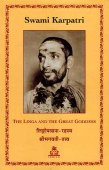Brahmarupa, Brahmarūpa, Brahmarūpā, Brahma-rupa: 6 definitions
Introduction:
Brahmarupa means something in Hinduism, Sanskrit. If you want to know the exact meaning, history, etymology or English translation of this term then check out the descriptions on this page. Add your comment or reference to a book if you want to contribute to this summary article.
In Hinduism
Purana and Itihasa (epic history)
Source: archive.org: Shiva Purana - English TranslationBrahmarūpa (ब्रह्मरूप) refers to one having “the form of Brahman”, and is used as an epithet for Śiva, according to the Śivapurāṇa 2.2.41.—Accordingly, as Viṣṇu and others eulogized Śiva:—“[...] obeisance to Vāma, Vāmarūpa, Vāmanetra, Aghora, the great lord and the Vikaṭa. Obeisance to Tatpuruṣa, to Nātha, the ancient Puruṣa, the bestower of the four aims of life, Vratin, and Parameṣṭhin. Obeisance to you, Īśāna, Īśvara, Brahman, of the form of Brahman (i.e., Brahmarūpa), the Supreme Soul”.

The Purana (पुराण, purāṇas) refers to Sanskrit literature preserving ancient India’s vast cultural history, including historical legends, religious ceremonies, various arts and sciences. The eighteen mahapuranas total over 400,000 shlokas (metrical couplets) and date to at least several centuries BCE.
Vaishnavism (Vaishava dharma)
Source: Pure Bhakti: Brhad Bhagavatamrtam1) Brahmarūpa (ब्रह्मरूप) refers to “embodiments of spirit” according to the Śrī Bṛhad-bhāgavatāmṛta 1.3.45.—Accordingly, “[...] the opulences of Vaikuṇṭha, considered to be eternally true, are brahmarūpa, embodiments of spirit. Now, the question may be posed that if the Brahman is variegated, then how can divine opulences have brahmasvarūpa (a constitutional nature of Brahman or spirit)? These divine opulences, possessing the nature of immutable Brahman and due to the special śakti or the potency of Bhagavān, are endowed with a wonderful, sweet variegatedness”.
2) Brahmarūpa (ब्रह्मरूप) refers to “oneness with Brahman” according to the Śrī Bṛhad-bhāgavatāmṛta 2.4.201.—Accordingly, “[...] If the devotees were to attain oneness with Brahman (brahmarūpa), then they would receive only minute happiness like the liberated souls receive, no more than that. In other words, if the devotees’ forms were not condensed embodiments of sac-cid-ānanda, they would receive approximately the same amount of happiness as the liberated souls”.

Vaishnava (वैष्णव, vaiṣṇava) or vaishnavism (vaiṣṇavism) represents a tradition of Hinduism worshipping Vishnu as the supreme Lord. Similar to the Shaktism and Shaivism traditions, Vaishnavism also developed as an individual movement, famous for its exposition of the dashavatara (‘ten avatars of Vishnu’).
Shaktism (Shakta philosophy)
Source: Google Books: Lalita SahasranamaBrahmarūpā (ब्रह्मरूपा) is name 256 in the Lalitāsahasranāma (cf. name 401: Vividhākārā).—Accordingly, “She is in the form of the God of creation Brahma (i.e., Brahmarūpā). Brahma has four heads. The four heads could mean the components of antaḥkaraṇa mind, intellect, consciousness and ego. Without these four, creation is not possible. There are many stories about Brahma’s four heads. He had five heads, possibly meaning the five elements or five Prāṇas (prāṇa, apāna, vyāna, samāna and udāna) that are needed for creation. The fifth head was cut off by Śiva for having shown disrespect to Him. There is yet another story, which says that Brahma had split his body horizontally into two, a male and a female form (different from Ardhanārīśvara form of Śiva where Śiva’s body is dissevered vertically, the other half occupied by Śaktī). Brahma is said to be the great-grandfather, Viṣṇu the grandfather and Śiva the father of this universe. [...]”.
Source: Google Books: ManthanabhairavatantramBrahmarūpa (ब्रह्मरूप) refers to one of the twenty-one spheres of the rūpa state, according to Tantric texts such as the Kubjikāmata-tantra, the earliest popular and most authoritative Tantra of the Kubjikā cult.—Chapter nineteen of the Kubjikāmatatantra begins with an exposition of the state called Form (rūpa). This is manifest in twenty-one spheres (cakra) [i.e., Brahmarūpa] of ‘millions’ (koṭi) of energies arranged along the axis of the head starting with the throat, up through the eyebrows and beyond. [...]

Shakta (शाक्त, śākta) or Shaktism (śāktism) represents a tradition of Hinduism where the Goddess (Devi) is revered and worshipped. Shakta literature includes a range of scriptures, including various Agamas and Tantras, although its roots may be traced back to the Vedas.
Languages of India and abroad
Sanskrit dictionary
Source: Cologne Digital Sanskrit Dictionaries: Monier-Williams Sanskrit-English DictionaryBrahmarūpa (ब्रह्मरूप):—[=brahma-rūpa] [from brahma > brahman] m. Name of Viṣṇu, [Viṣṇu-smṛti, viṣṇu-sūtra, vaiṣṇava-dharma-śāstra]
[Sanskrit to German]
Sanskrit, also spelled संस्कृतम् (saṃskṛtam), is an ancient language of India commonly seen as the grandmother of the Indo-European language family (even English!). Closely allied with Prakrit and Pali, Sanskrit is more exhaustive in both grammar and terms and has the most extensive collection of literature in the world, greatly surpassing its sister-languages Greek and Latin.
See also (Relevant definitions)
Relevant text
Search found 12 books and stories containing Brahmarupa, Brahmarūpa, Brahmarūpā, Brahma-rupa, Brahma-rūpa, Brahma-rūpā; (plurals include: Brahmarupas, Brahmarūpas, Brahmarūpās, rupas, rūpas, rūpās). You can also click to the full overview containing English textual excerpts. Below are direct links for the most relevant articles:
Prasthanatrayi Swaminarayan Bhashyam (Study) (by Sadhu Gyanananddas)
6.1. Experience of Jīvanamukti < [Chapter 5 - Analysis on the basis of Soteriology]
4.2. The Nature of Liberation < [Chapter 5 - Analysis on the basis of Soteriology]
7.3. The Body of a Mukta in Akṣaradhāma < [Chapter 5 - Analysis on the basis of Soteriology]
Taittiriya Upanishad Bhashya Vartika (by R. Balasubramanian)
Verse 3.12 < [Book 3 - Bhṛguvallī]
Cidgaganacandrika (study) (by S. Mahalakshmi)
Verse 123 [Khecarī attains Śambhupada through Suṣumnā-nāḍi] < [Chapter 3 - Third Vimarśa]
Chaitanya Bhagavata (by Bhumipati Dāsa)
Verse 3.10.118 < [Chapter 10 - The Glories of Śrī Puṇḍarīka Vidyānidhi]
Shat-cakra-nirupana (the six bodily centres) (by Arthur Avalon)
Yoga-sutras (with Vyasa and Vachaspati Mishra) (by Rama Prasada)
Sūtra 1.38 < [Book 1 - Trance (Samādhi)]
Related products
